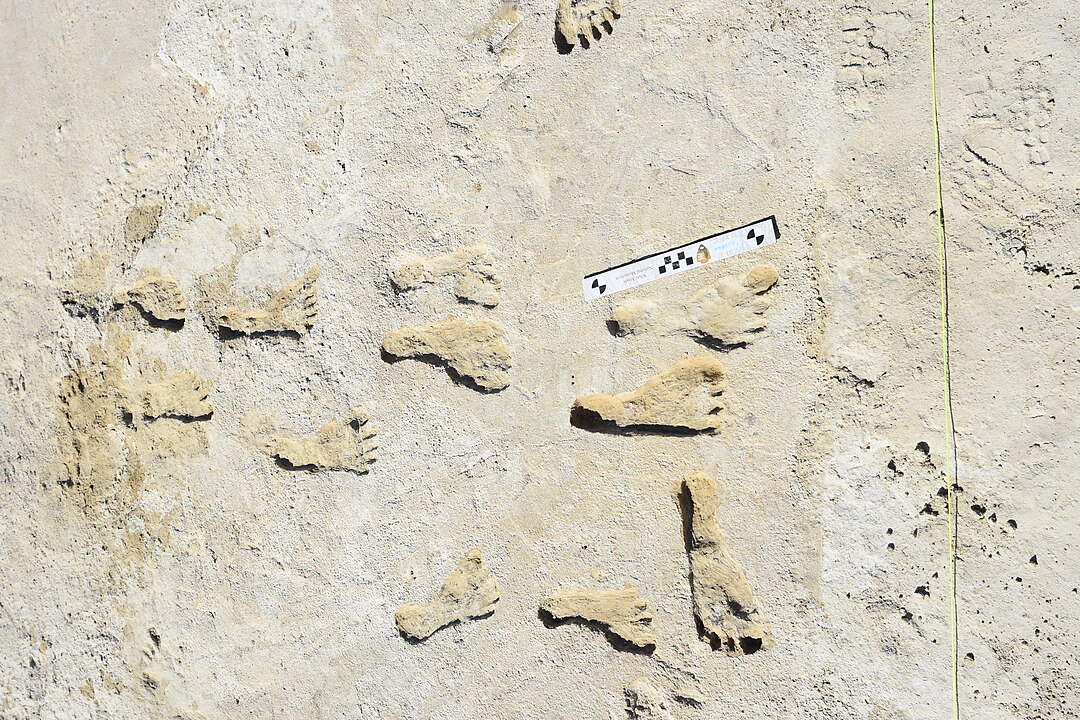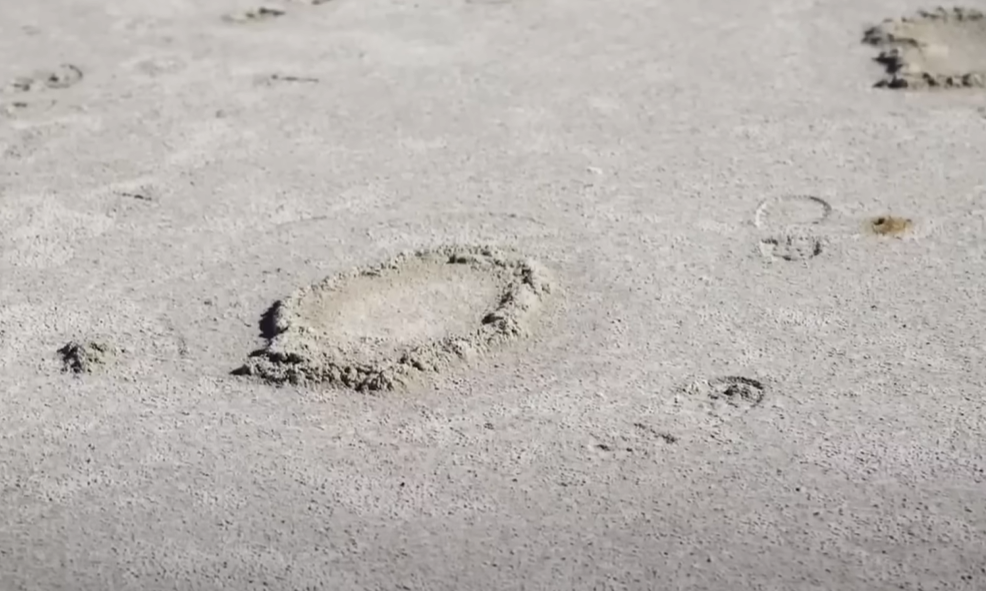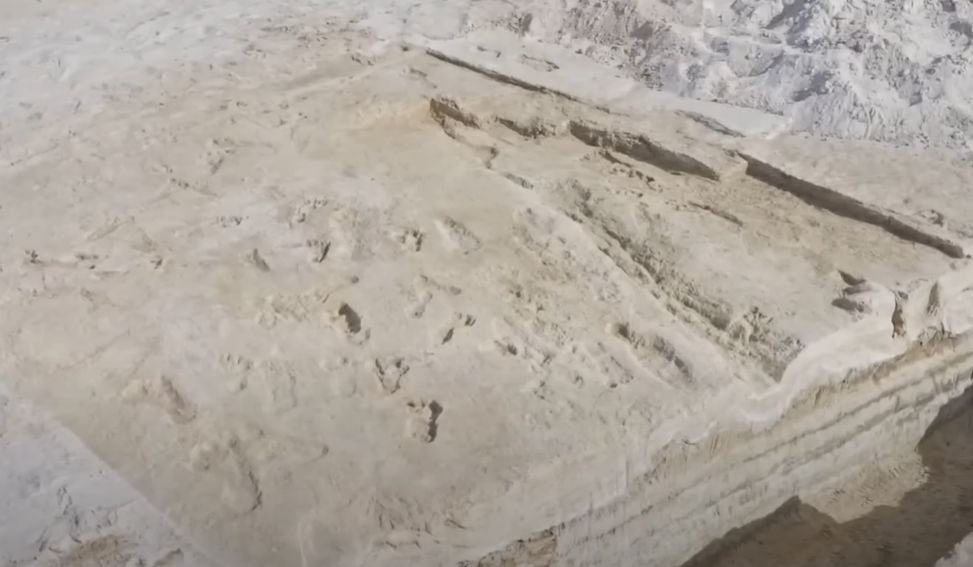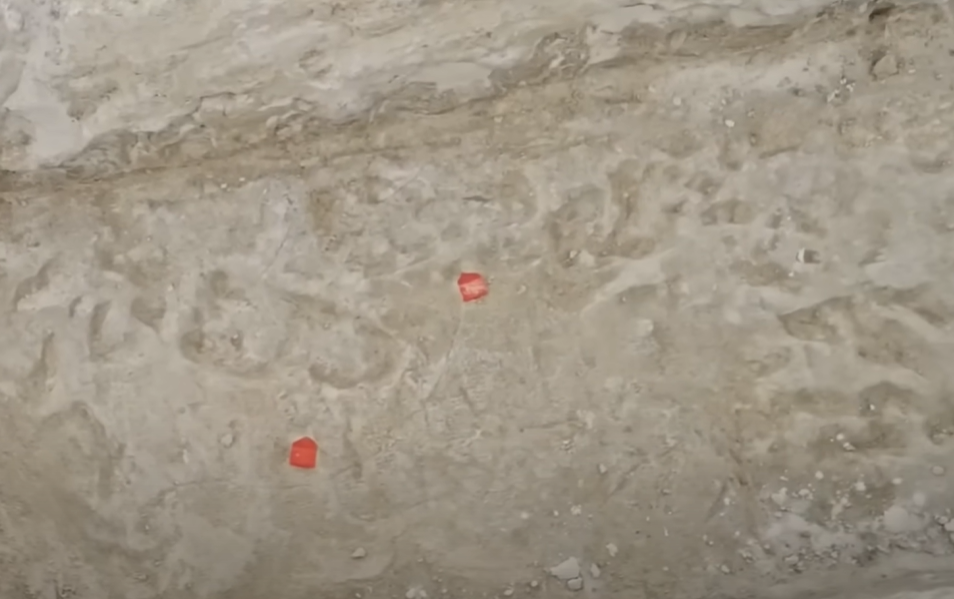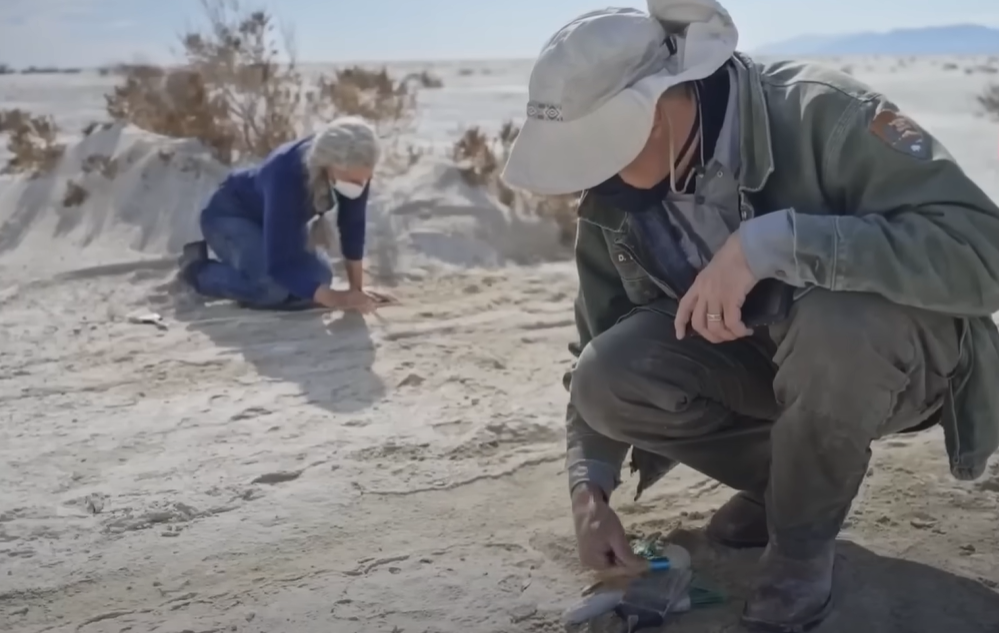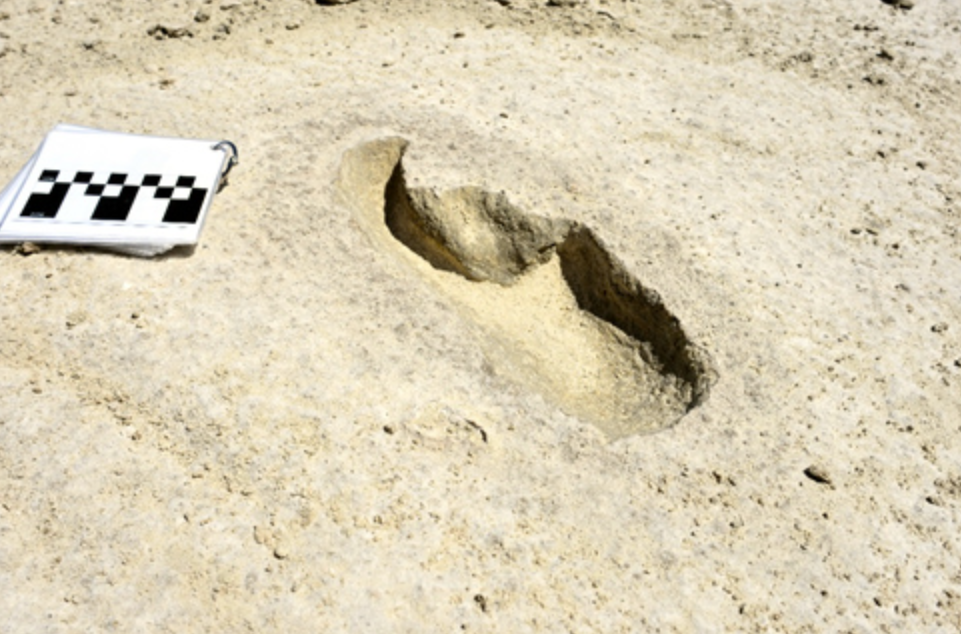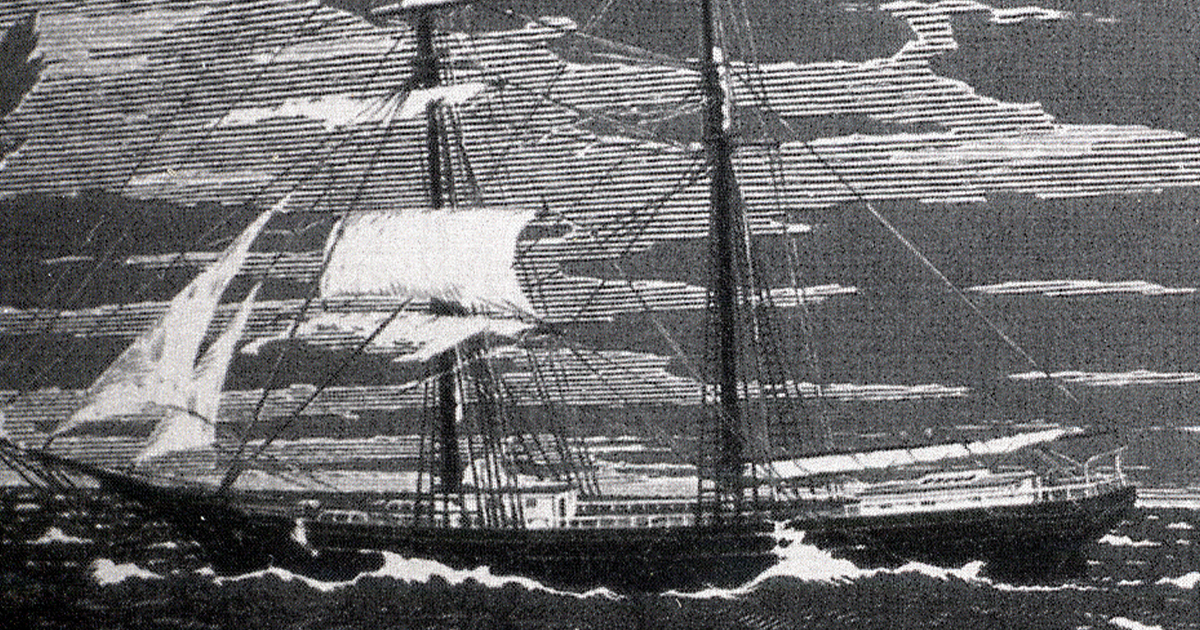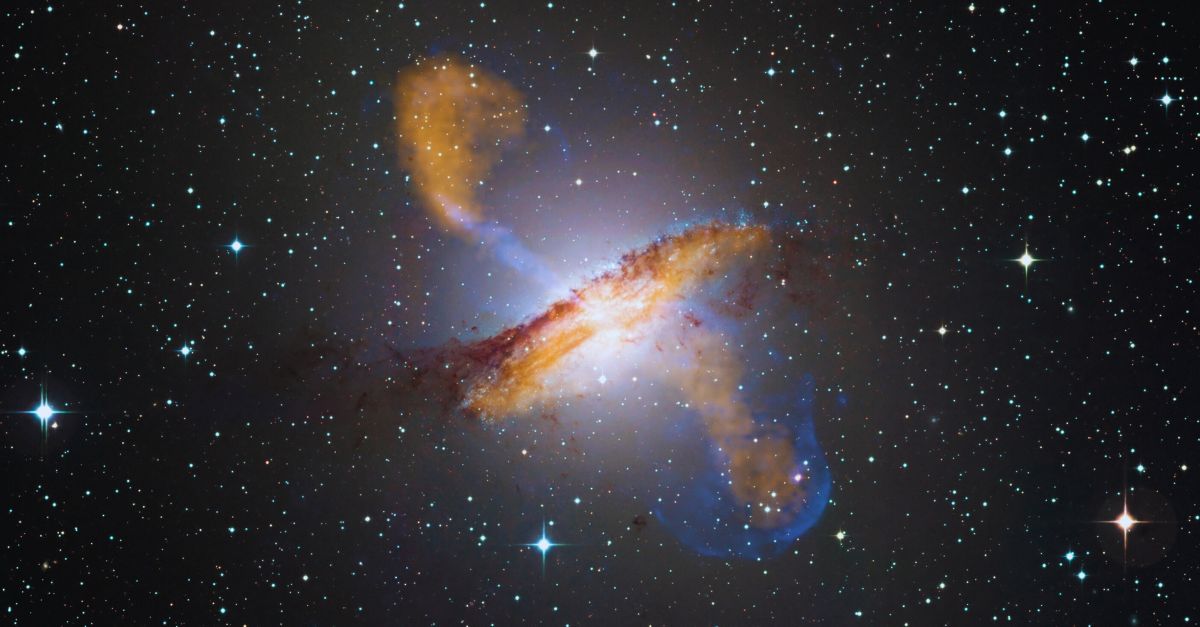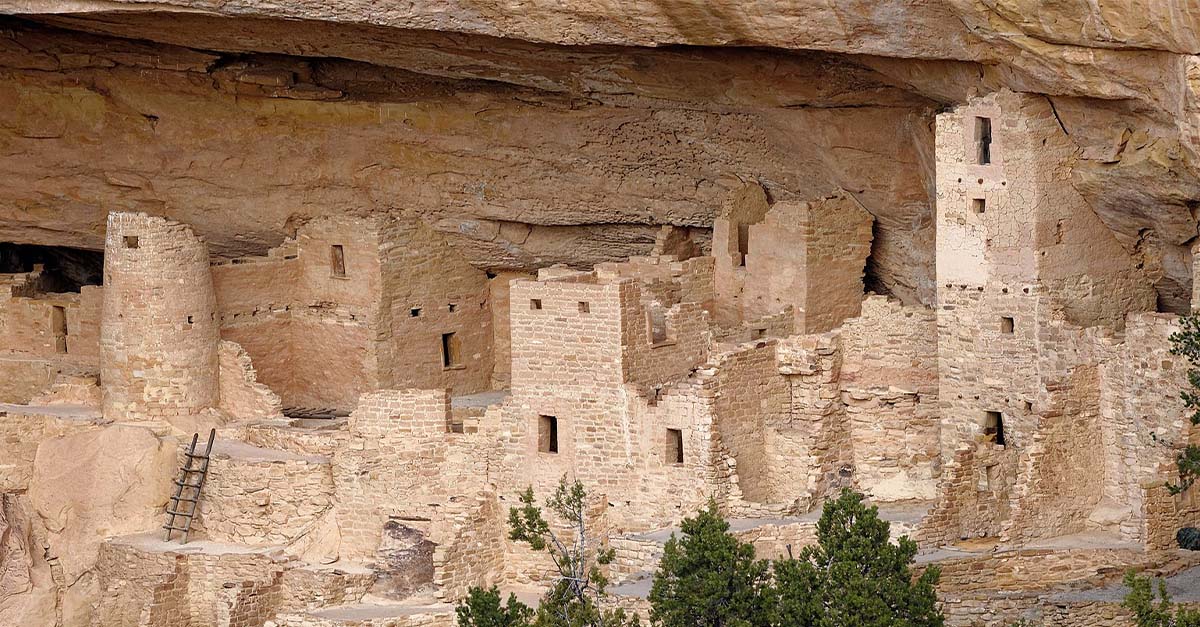Expanding Our Knowledge Of Human Settlement In North America
Hundreds of thousands of fossilized footprints have been discovered in White Sands National Park in New Mexico. The discovery has made scientists question long-held beliefs about the earliest human inhabitants of North America. Let’s see what these ancient footprints revealed!
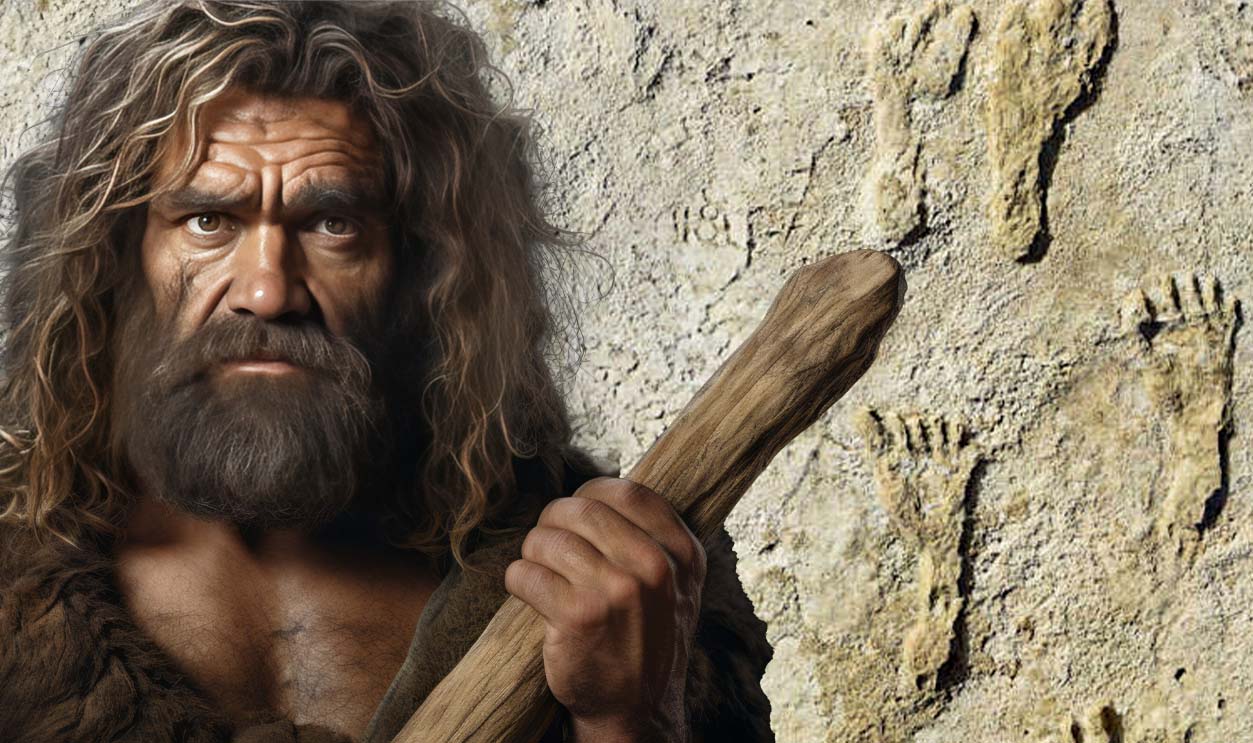
White Sands National Park
Located in southern New Mexico, White Sands National Park covers almost 275 square miles of desert land with rippling dunes of white gypsum sand. White Sands was declared a national monument in 1933 and designated a national park in 2019.
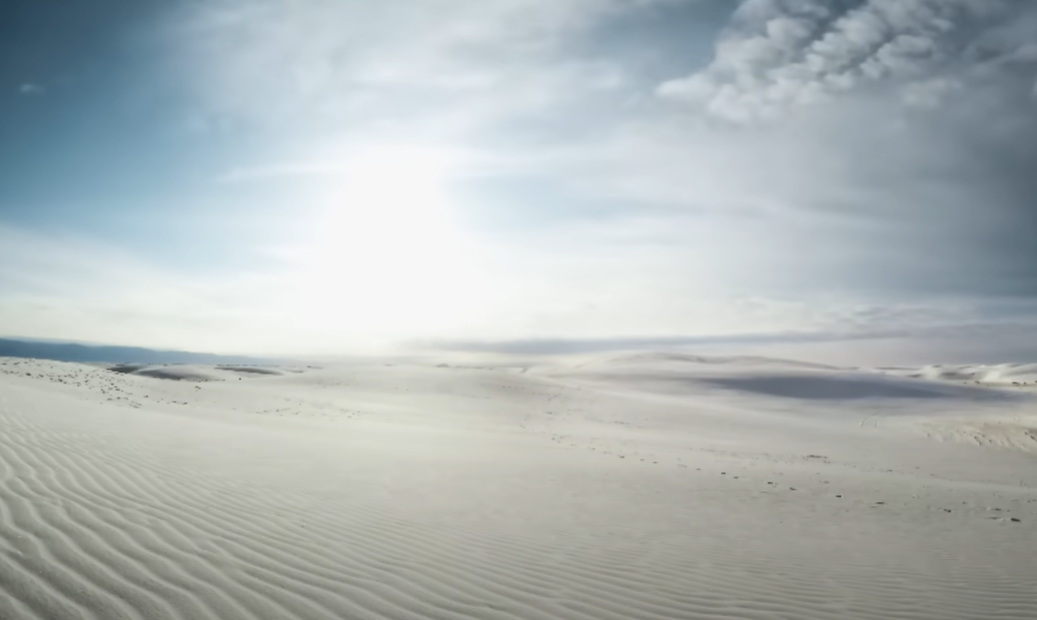 PBS America, Ice Age Footprints (2022)
PBS America, Ice Age Footprints (2022)
A Natural Wonder
The gypsum dunes at White Sands are a stunning natural wonder. The dunefield is the largest in the world. The sand has an average depth of about 30 feet (9.1 m) with some dunes reaching an astonishing height of about 60 feet (18 m).
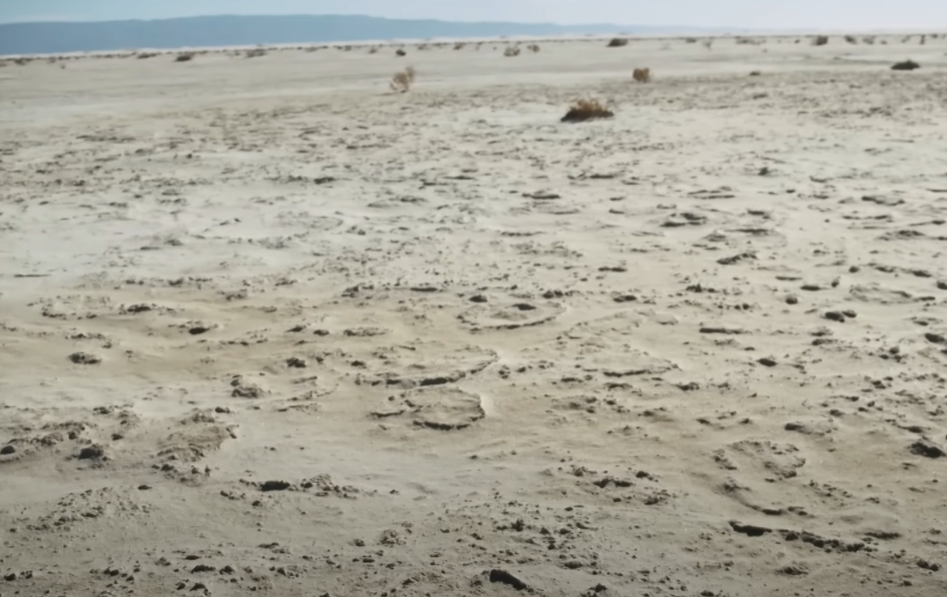 PBS America, Ice Age Footprints (2022)
PBS America, Ice Age Footprints (2022)
An Ancient Lake
The area where White Sands National Park exists today was once a large prehistoric lake that covered about 1,600 square miles. Lake Otero was part of a wet, lush ecosystem that attracted abundant life forms—including megafauna and human beings.
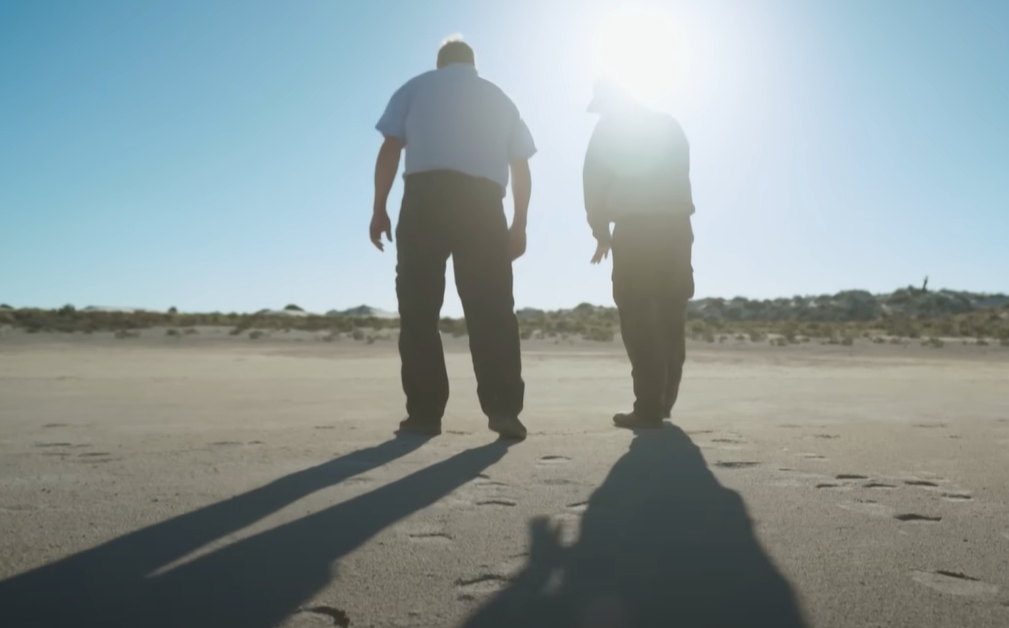 PBS America, Ice Age Footprints (2022)
PBS America, Ice Age Footprints (2022)
Prehistoric Climate Change
Over time, as the Earth warmed, Lake Otero began to evaporate. Around 12,000 years ago, rainfall in the area tapered off and the verdant green landscape surrounding the lake began to die away. For a time, the area formerly covered by the vast Lake Otero was marked only by small pools of water.
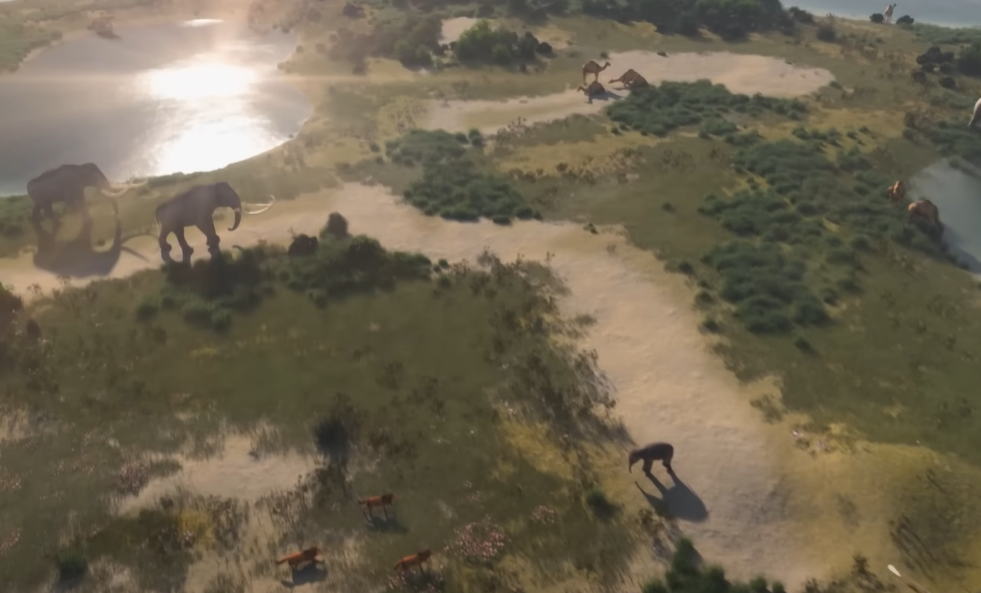 PBS America, Ice Age Footprints (2022)
PBS America, Ice Age Footprints (2022)
Muddy Footprints
As the area's megafauna and human inhabitants navigated around the ever-decreasing pools of water, they left behind footprints in the mud. This process continued for thousands of years. Over the millennia, sediment built up, resulting in multiple layers of soil and sand—and footprints.
The Formation Of White Sand
Lake Otero had a rich bed of gypsum, thanks to runoff from the nearby mountains. As the lake dried up, crystals began to form from the exposed gypsum. Harsh winds blew the crystals around, breaking them down and transforming them into white sand.
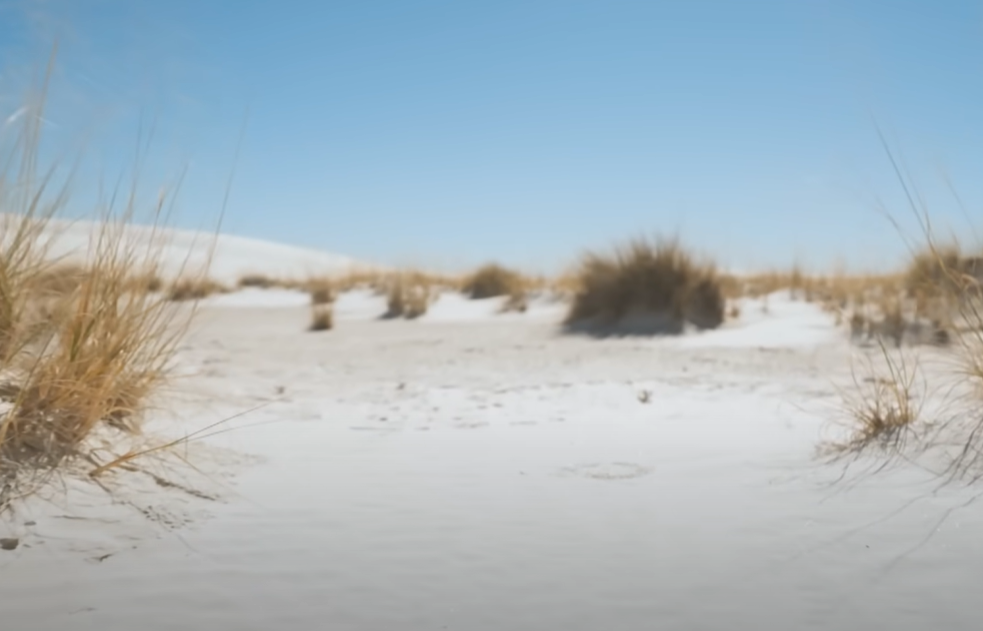 PBS America, Ice Age Footprints (2022)
PBS America, Ice Age Footprints (2022)
Footprints In The Sand
It can be difficult to spot the fossilized footprints at White Sands National Park. Moisture conditions have to be just right—neither too dry nor too wet—and the wind is apt to uncover the prints only to cover them once again a few minutes later. Often, the prints are marked only by faint shifts in colour and are only discernible by a trained eye.
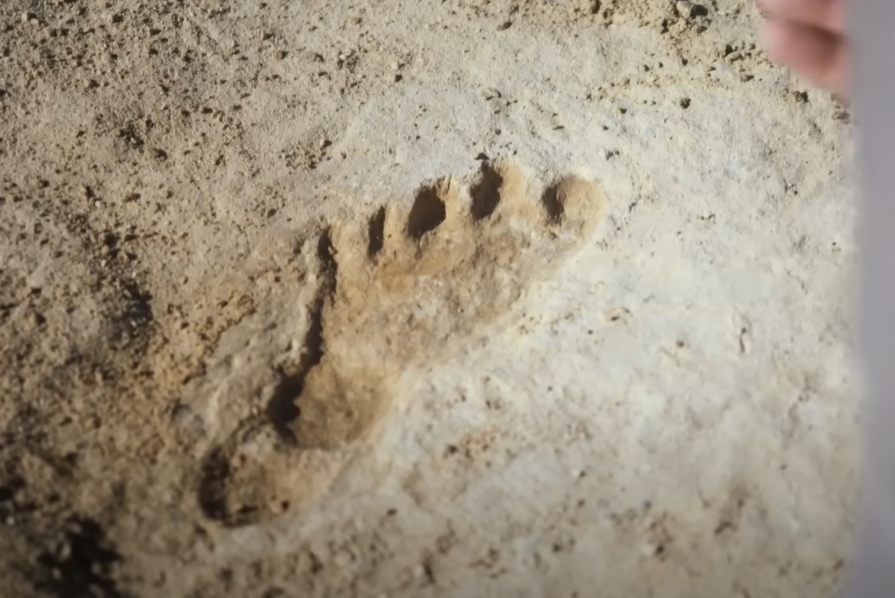 PBS America, Ice Age Footprints (2022)
PBS America, Ice Age Footprints (2022)
Earliest Recorded Discovery
In the early 1930s, a government trapper discovered a large fossilized footprint at White Sands. The print measured about 22 inches long by eight inches wide. The trapper speculated that he had discovered a footprint made by Bigfoot.
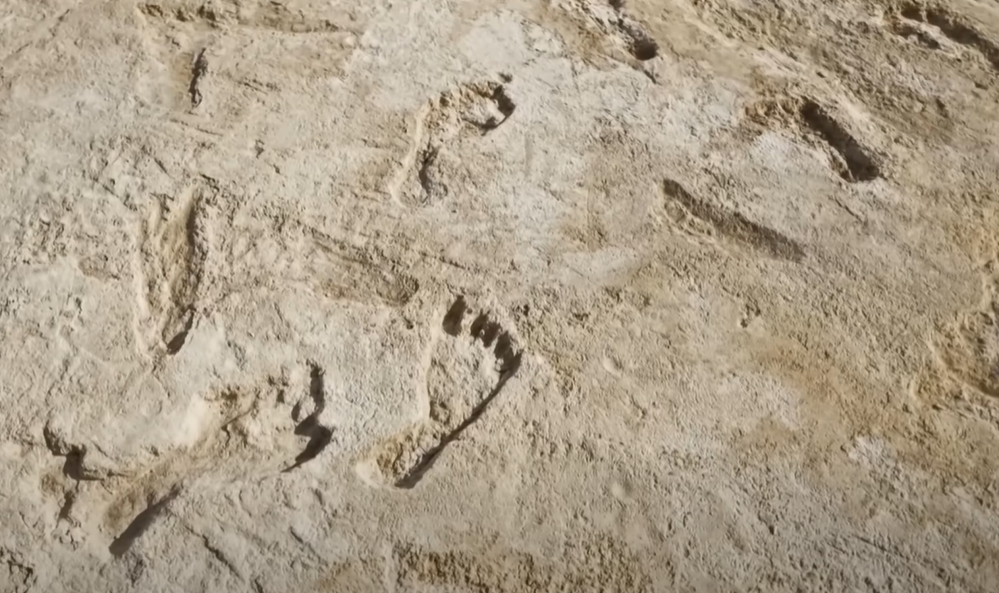 PBS America, Ice Age Footprints (2022)
PBS America, Ice Age Footprints (2022)
21st Century Discoveries
After the discovery of that first footprint, a few more were found over the years, creating a small collection of known prints. However, in 2006, a group of scientists became curious about dark spots in the sand that followed a pattern similar to footprints. In 2009, those scientists dug the spots up.
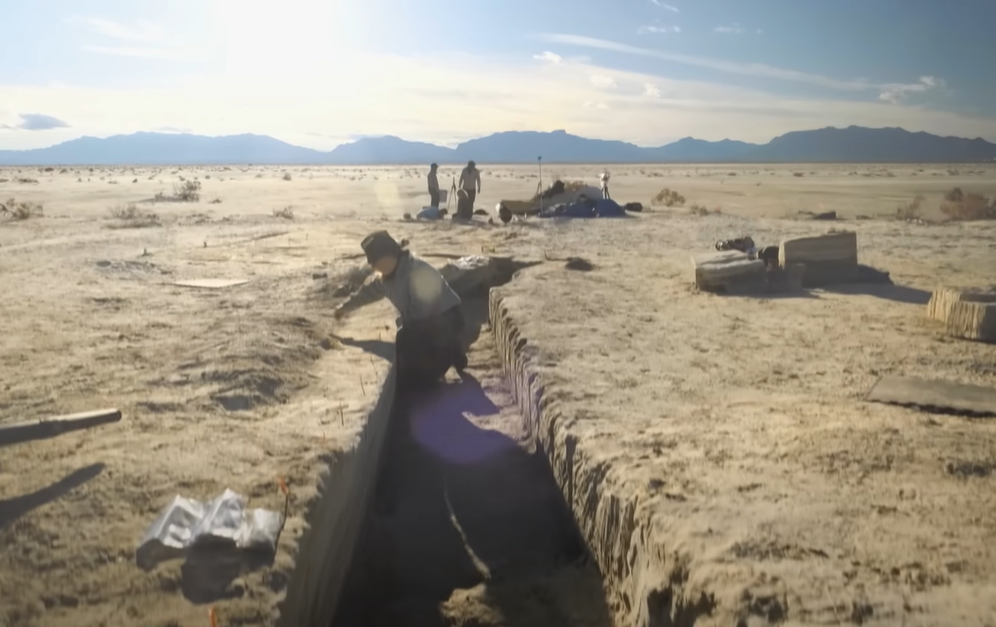 PBS America, Ice Age Footprints (2022)
PBS America, Ice Age Footprints (2022)
Evidence Of Ice Age Megafauna
As the scientists suspected, the spots were fossilized footprints—specifically, footprints made by humans and giant ground sloths (the footprint discovered in the 1930s was also made by a giant ground sloth and not by Bigfoot). The mammals once roamed Mexico and the American Southwest along with other megafauna like ancient camels, Columbian mammoths, and the American lion.
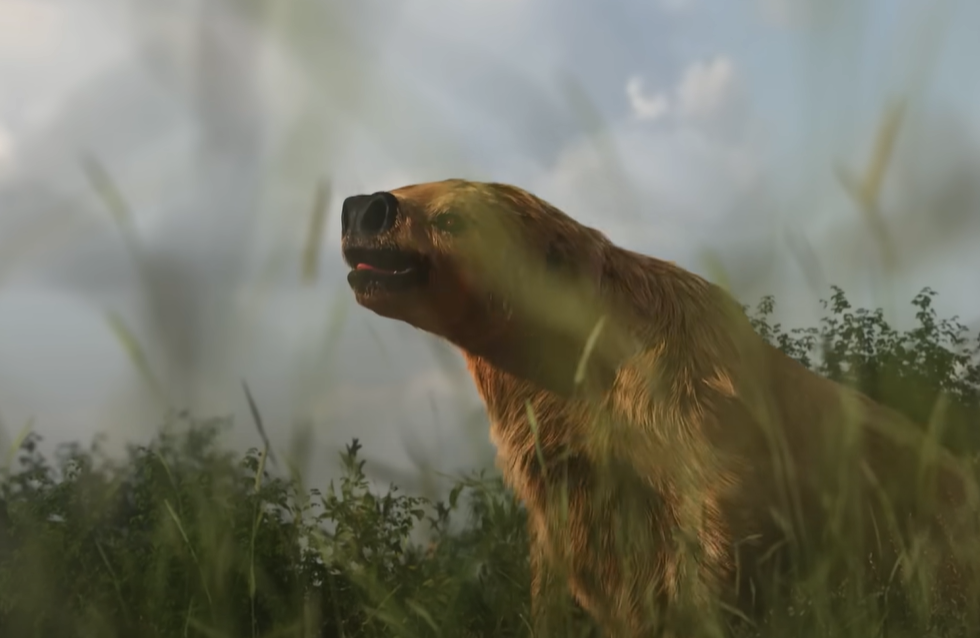 PBS America, Ice Age Footprints (2022)
PBS America, Ice Age Footprints (2022)
Hundreds Of Thousands Of Footprints
The work uncovering and identifying the fossilized footprints at White Sands has exploded since the early years of the 21st century. In that time, hundreds of thousands of fossilized footprints have been located and documented—making White Sands National Park home to the world's largest known collection of fossilized Ice Age footprints.
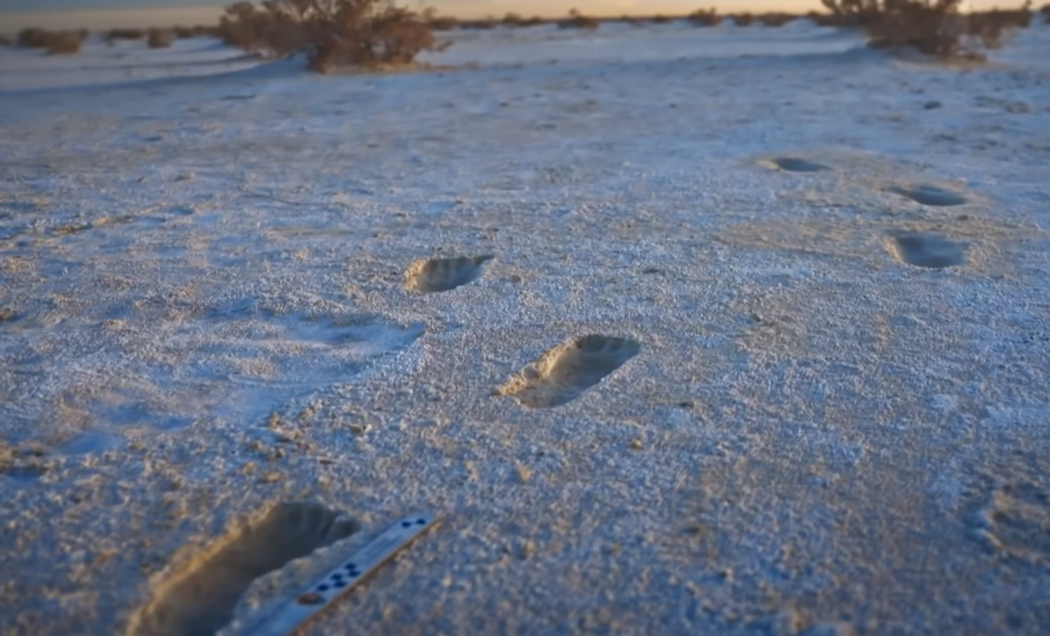 PBS America, Ice Age Footprints (2022)
PBS America, Ice Age Footprints (2022)
Locating The Footprints
While some footprints are apparent on the surface level, scientists have also located footprints beneath the sand. Researchers use magnetometry and ground-penetrating radar to locate hidden footprints. After removing the sediment surrounding those prints, they sometimes make plaster casts and 3-D models of the tracks—especially ones that seem to hold important stories.
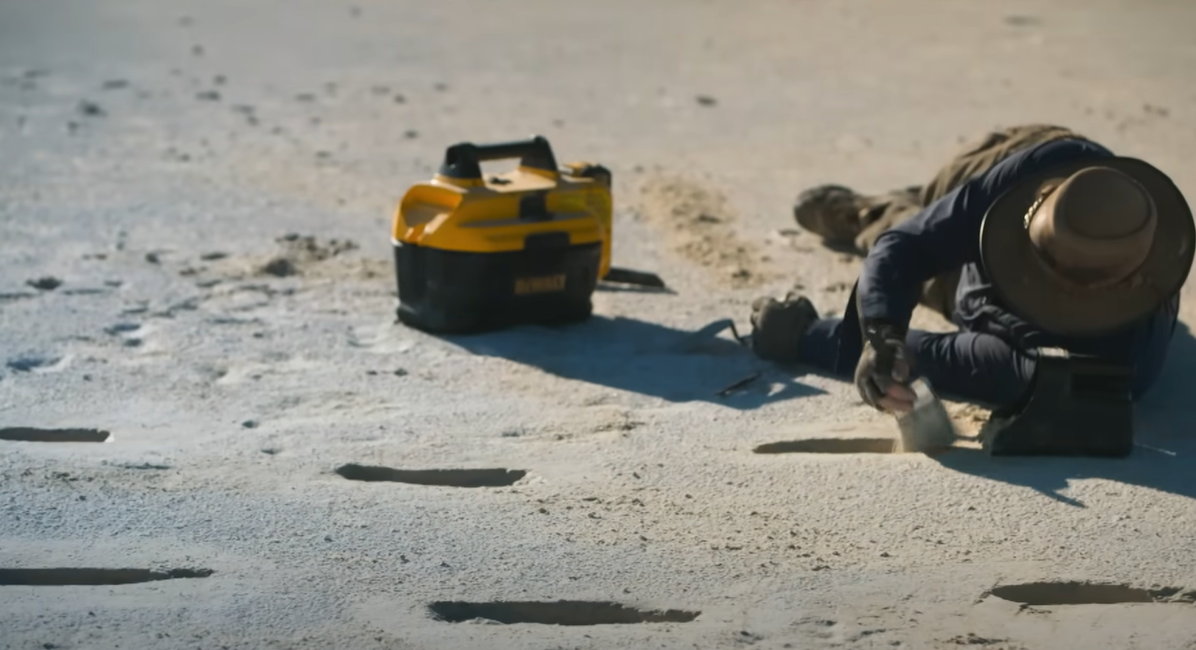 PBS America, Ice Age Footprints (2022)
PBS America, Ice Age Footprints (2022)
Scientific Treasure
The footprints are a scientific treasure, offering valuable insights to archaeologists, geographers, geologists, environmental scientists, and others studying life in North America during the Ice Age. The footprints have called into question many previously-held theories about human migration to and early habitation of North America.
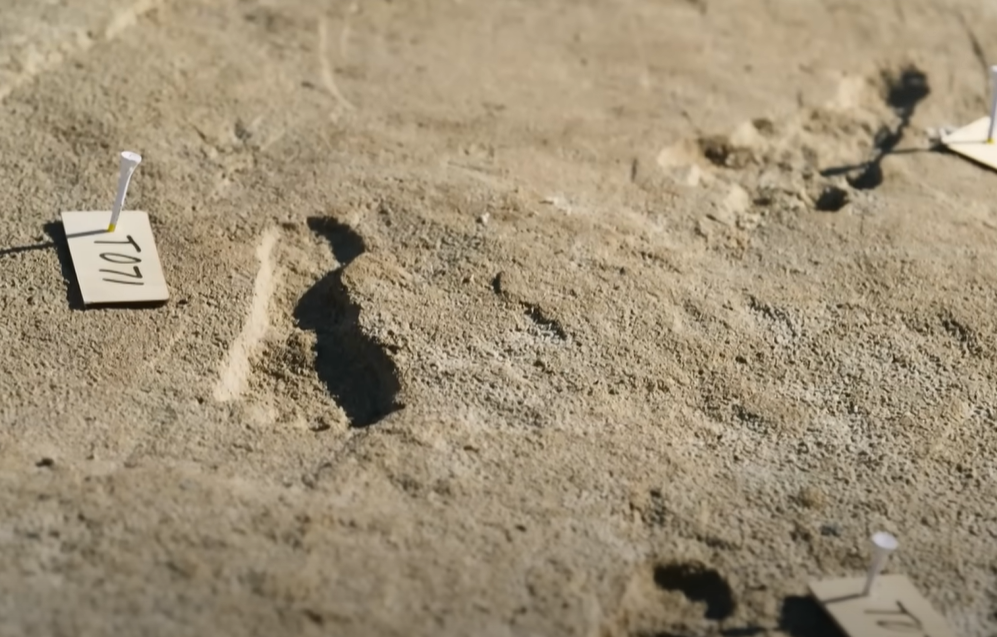 PBS America, Ice Age Footprints (2022)
PBS America, Ice Age Footprints (2022)
Dating Human Arrival In North America
For most of the 20th century, scientists and scholars believed that humans migrated from Asia to North America about 13,000 to 16,000 years ago. It has been thought that this migration took place over the Bering Land Bridge, which connected Siberia to Alaska during the last ice age.
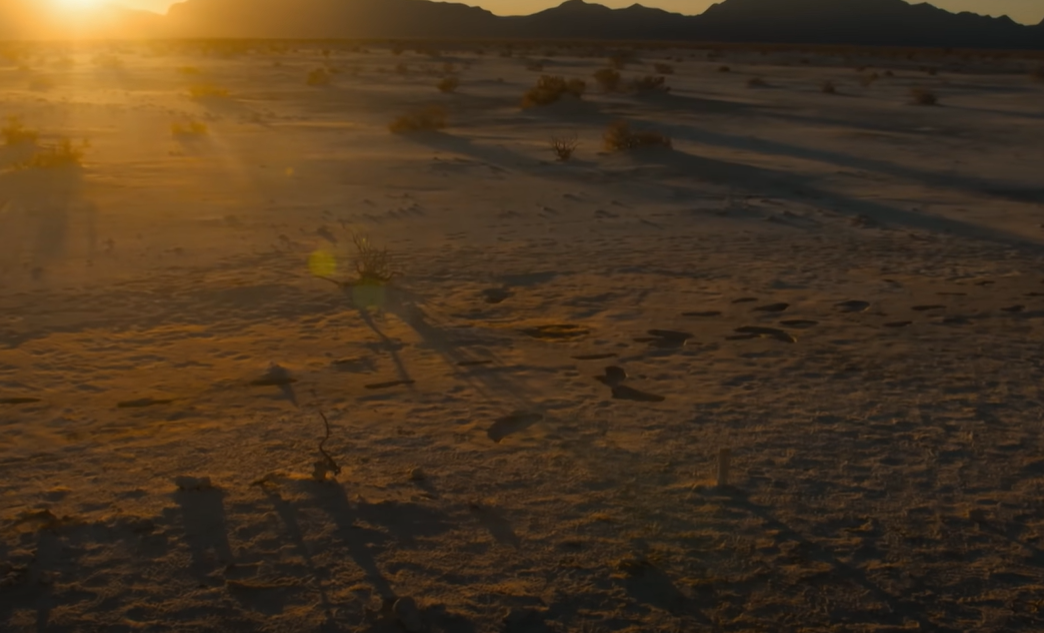 PBS America, Ice Age Footprints (2022)
PBS America, Ice Age Footprints (2022)
Clovis First Theory
It was previously believed that the first human inhabitants of North America were the Clovis people. Although named after a town in New Mexico, Clovis culture was widespread across present-day America. The culture became established about 13,000 years ago.
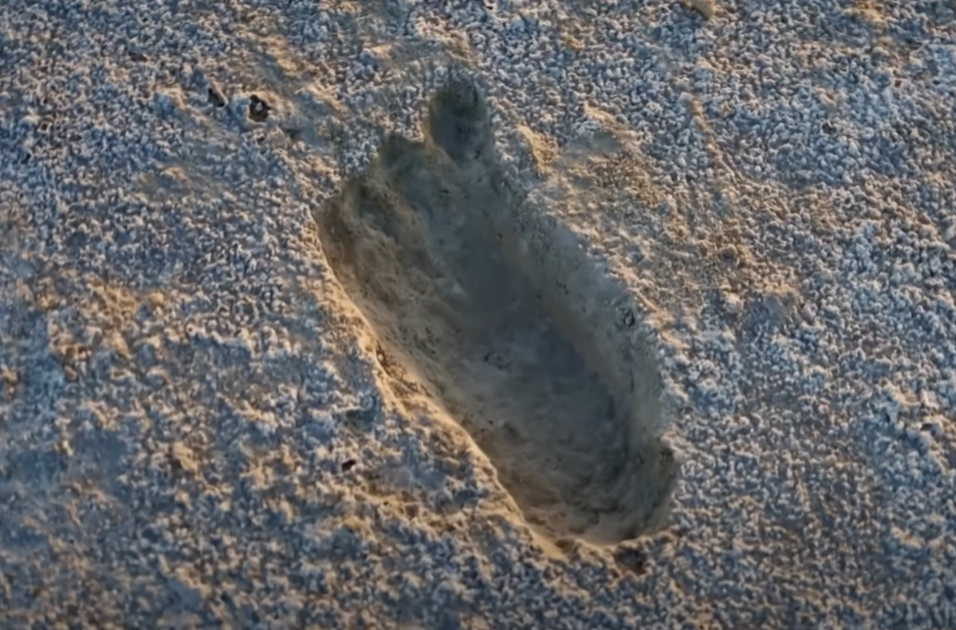 PBS America, Ice Age Footprints (2022)
PBS America, Ice Age Footprints (2022)
Older Sites Discovered—Including White Sands
Since the 1970s, significant archaeological discoveries have challenged the Clovis First theory. For example, the Monte Verde site in Chile is estimated to be 18,500 years old, and the Gault site in Texas is believed to be around 20,000 years old. If the evidence holds, White Sands is considerably older yet.
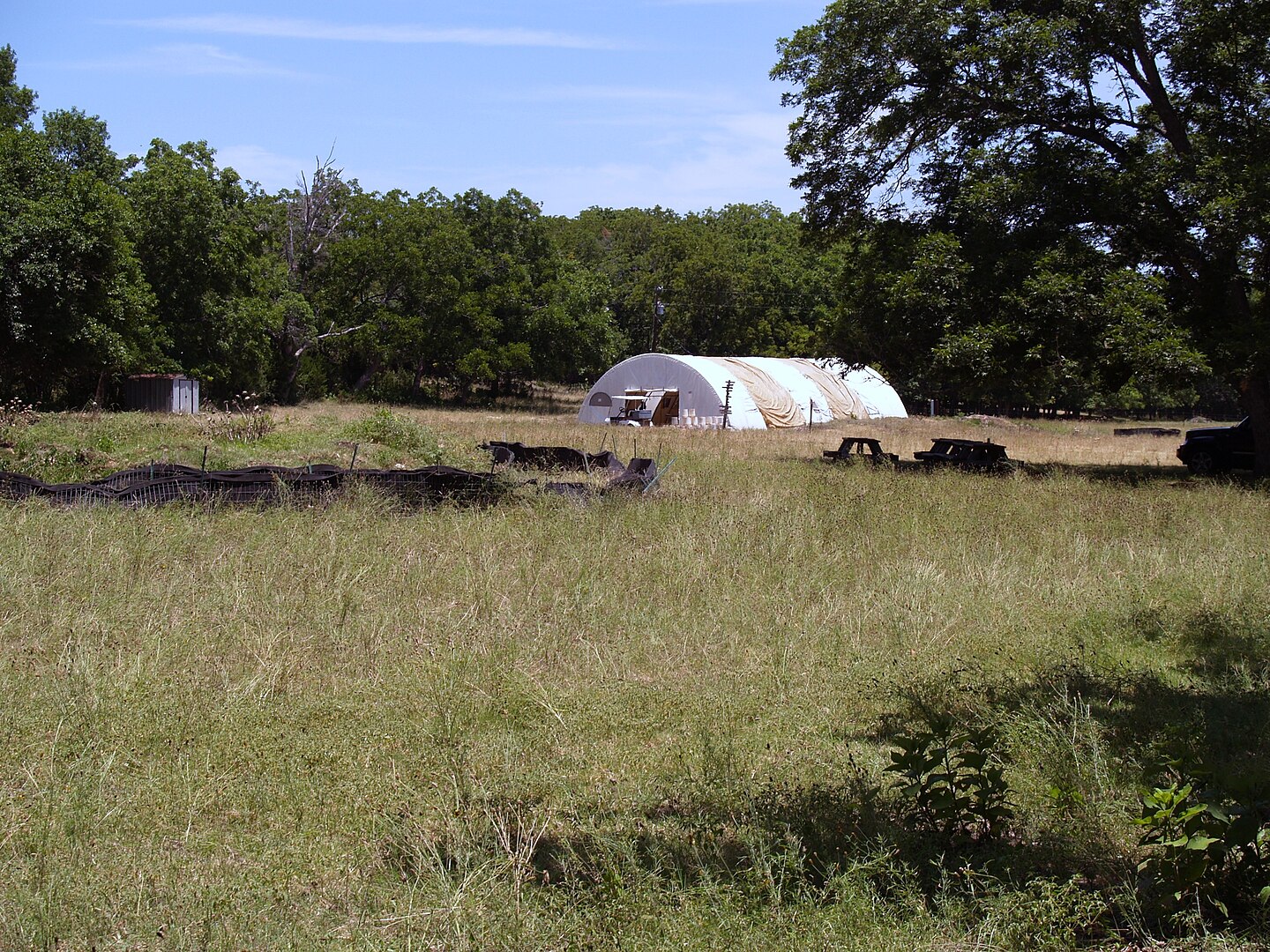 Jillabus, CC BY-SA 4.0, Wikimedia Commons
Jillabus, CC BY-SA 4.0, Wikimedia Commons
Dating The White Sands Footprints
Accurately dating the fossilized footprints at White Sands is challenging. Not only are the prints incredibly numerous, criss-crossing each other, but they could have been created thousands of years apart, becoming fossilized in different layers of sediment.
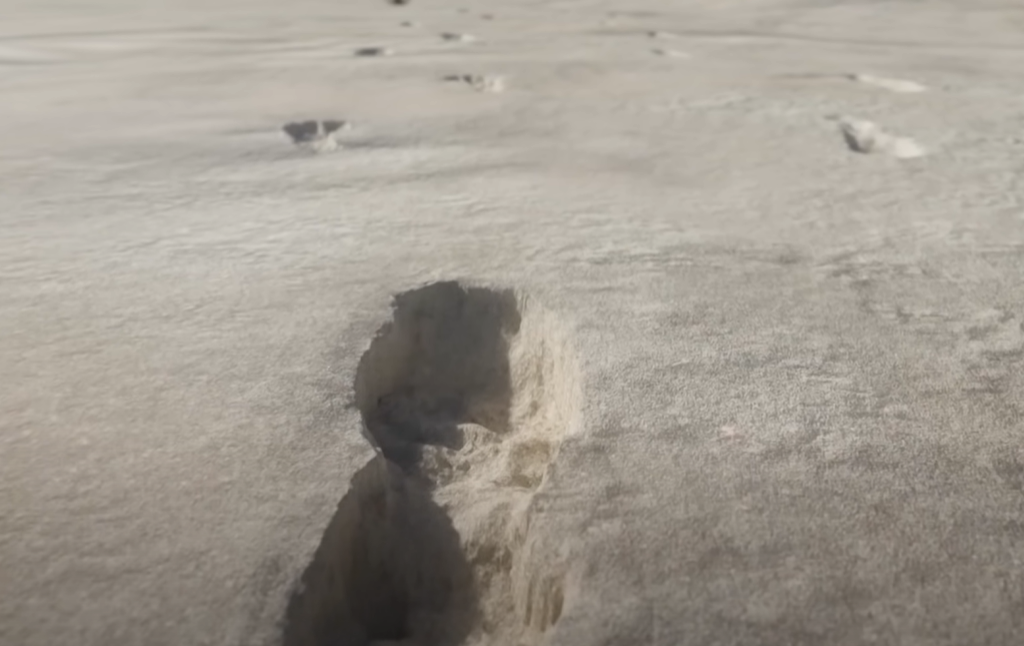 PBS America, Ice Age Footprints (2022)
PBS America, Ice Age Footprints (2022)
Radiocarbon-Dated Seeds
In 2019, researchers were able to retrieve ancient aquatic grass seeds from sediment layers above and below some fossilized footprints. Radiocarbon dating of the seeds determined that they were between 21,000 and 23,000 years old.
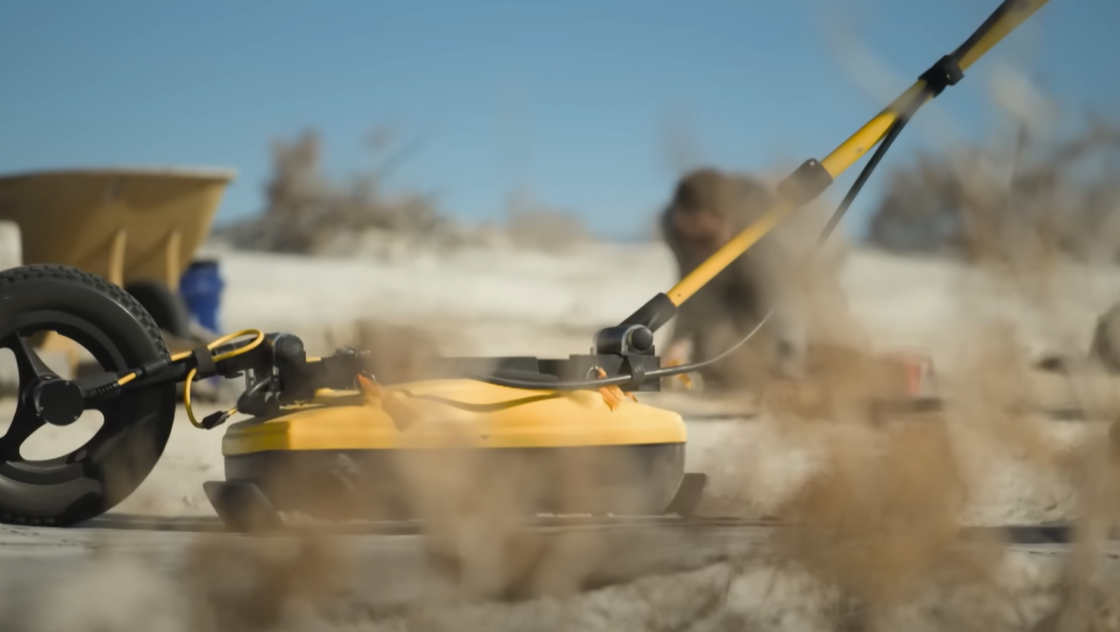 PBS America, Ice Age Footprints (2022)
PBS America, Ice Age Footprints (2022)
Radiocarbon-Dating Controversy
The results of the radiocarbon dating created some controversy among academics. It was argued that the results may be inaccurate because aquatic plants can absorb older carbon from water.
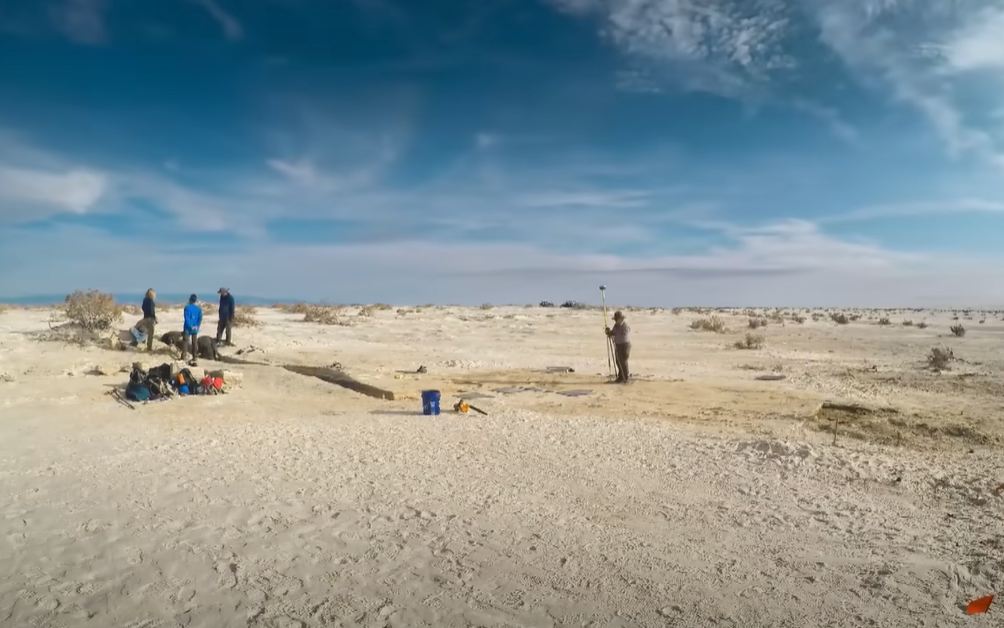 PBS America, Ice Age Footprints (2022)
PBS America, Ice Age Footprints (2022)
Optically Stimulated Luminescence Dating
In 2023, a new study confirmed the original dating of the White Sands footprints. This time, researchers used a technique called optically stimulated luminescence dating. Essentially, tubes were inserted into the soil around some footprints, capturing layers of sediment. Quartz crystals within the sediment were then analyzed, since their luminescent properties change with age.
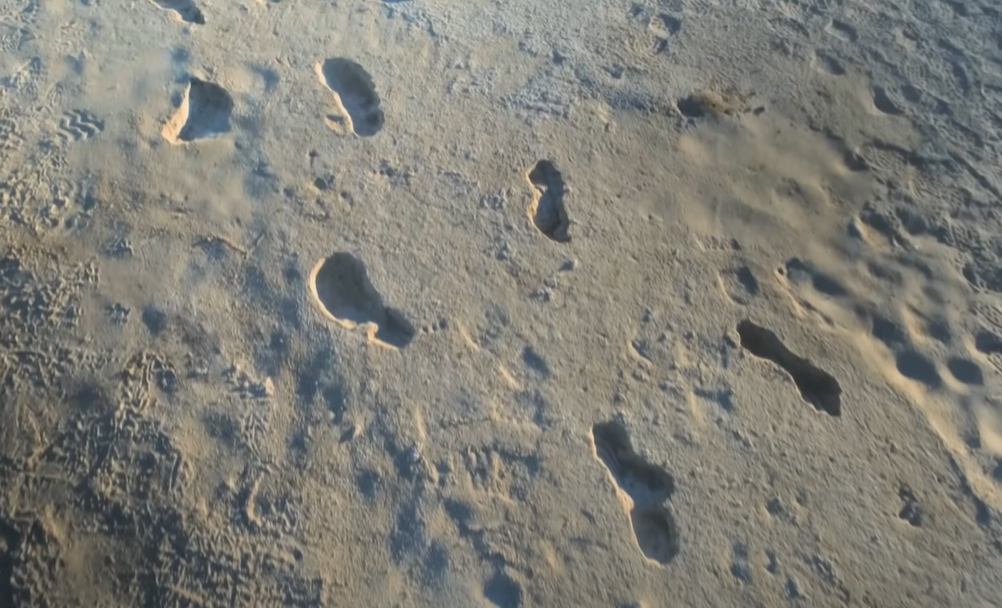 PBS America, Ice Age Footprints (2022)
PBS America, Ice Age Footprints (2022)
Shocking Results
The results of the independent studies, both dating the White Sands footprints to 23,000-21,000 Before Present (BP), shocked many scientists and academics. The date range indicates that human settlement occurred in North America thousands of years earlier than previously thought.
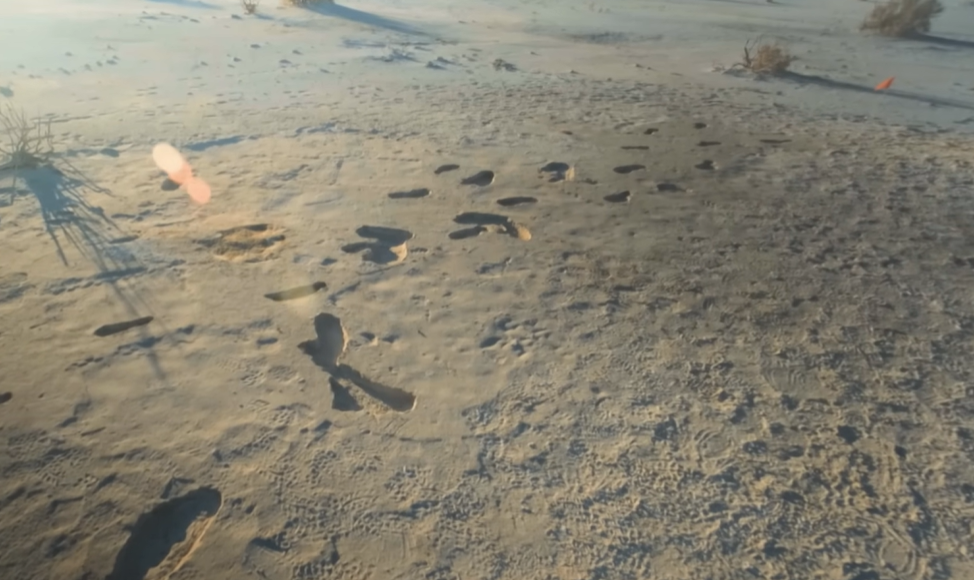 PBS America, Ice Age Footprints (2022)
PBS America, Ice Age Footprints (2022)
Megafauna Help Date Human Settlement
Many of the fossilized footprints show that humans and megafauna clearly coexisted. Because the animals have known extinction dates, scientists are able to corroborate the 23,000-21,000 BP date range for the settlement of the White Sands area.
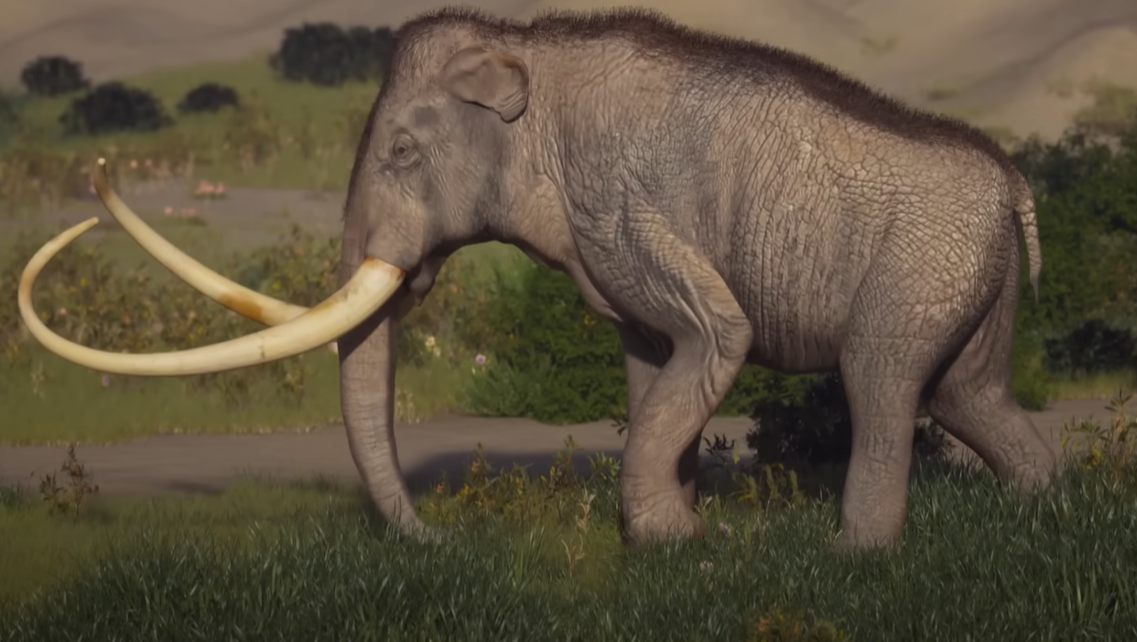 PBS America, Ice Age Footprints (2022)
PBS America, Ice Age Footprints (2022)
Existing Ice Age Theories Questioned
One reason why human settlement of North America was previously dated to about 13,000 years ago was the existence of massive ice sheets across present-day Canada during the Ice Age. It was believed that the ice sheets walled off human migration southwards from the Bering Land Bridge, preventing earlier migration.
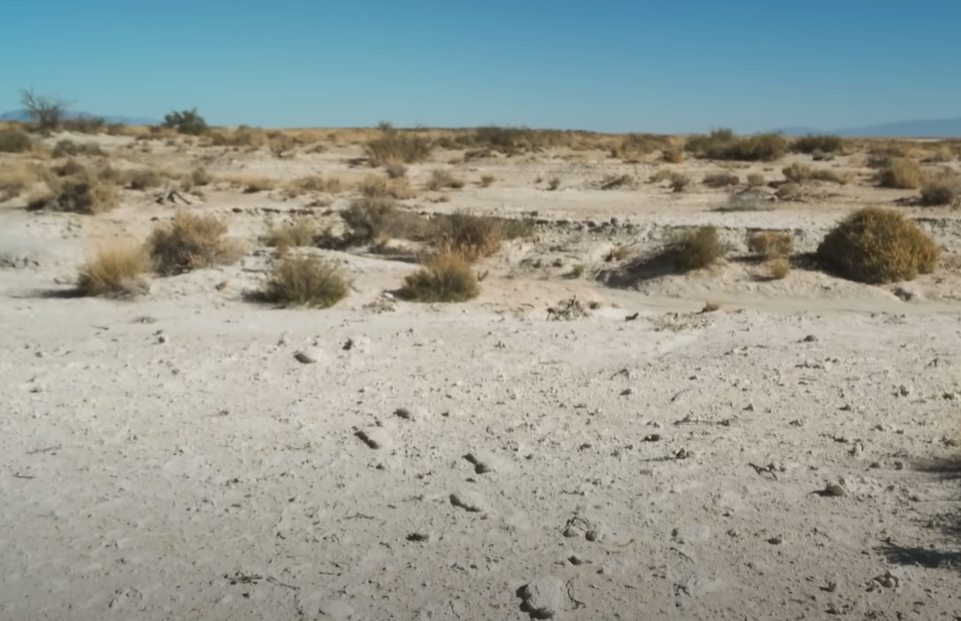 PBS America, Ice Age Footprints (2022)
PBS America, Ice Age Footprints (2022)
New Questions About The Ice Age
Dating the human habitation at White Sands 21,000-23,000 years ago raises important questions about the Ice Age and theories around human migration. How did people arrive in the American Southwest if they didn't walk south from the Bering Land Bridge once the ice sheets melted? Were they able to bypass the ice sheets somehow?
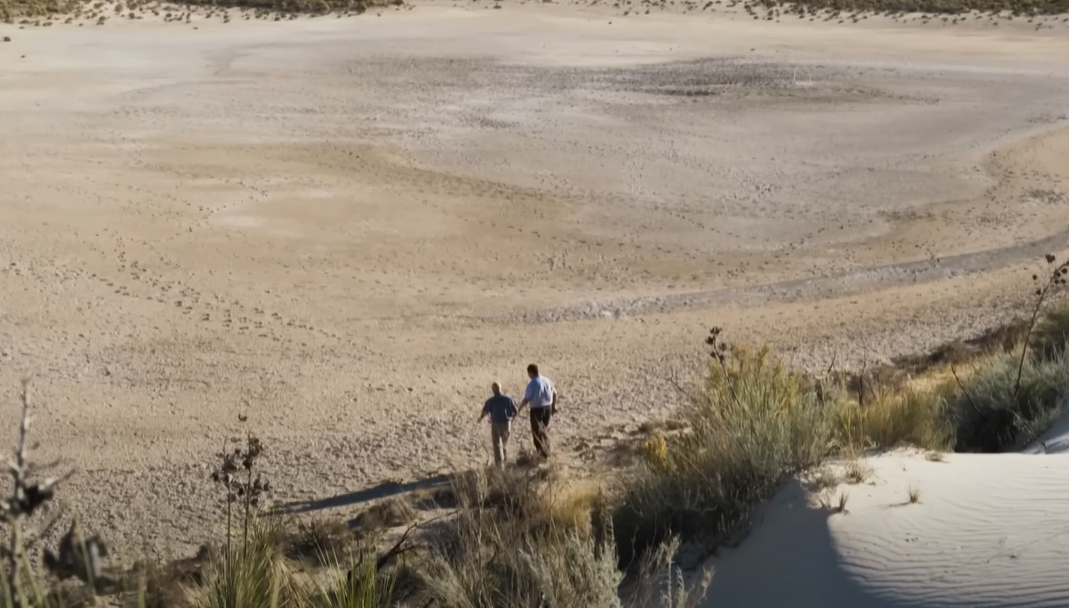 PBS America, Ice Age Footprints (2022)
PBS America, Ice Age Footprints (2022)
A Mysterious People
Other than the footprints, there are few archaeological remains to help us understand who these people were or which cultures they belonged to. It's also unclear whether there are any genetic links between them and the Indigenous people who reside in the American Southwest today.
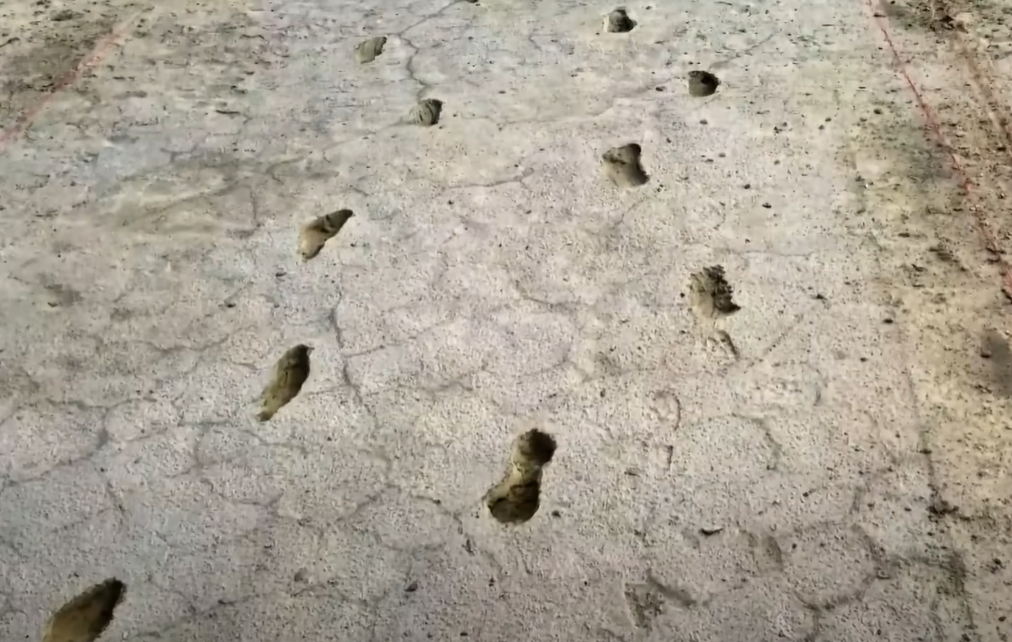 PBS America, Ice Age Footprints (2022)
PBS America, Ice Age Footprints (2022)
The Coexistence Of Humans And Megafauna
It's clear from the way their trackways intersect that humans and megafauna coexisted in the White Sands area—often quite closely. But while their close living arrangements answer some questions about prehistoric life, they raise many others.
 PBS America, Ice Age Footprints (2022)
PBS America, Ice Age Footprints (2022)
Questions About The Shared Environment
Scientists have many questions about the coexistence of humans and megafauna at the White Sands site. For example, did they avoid each other or seek each other out (as prey, for example)? Did humans contribute to the extinction of any big game? What did the world look like when they shared the landscape?
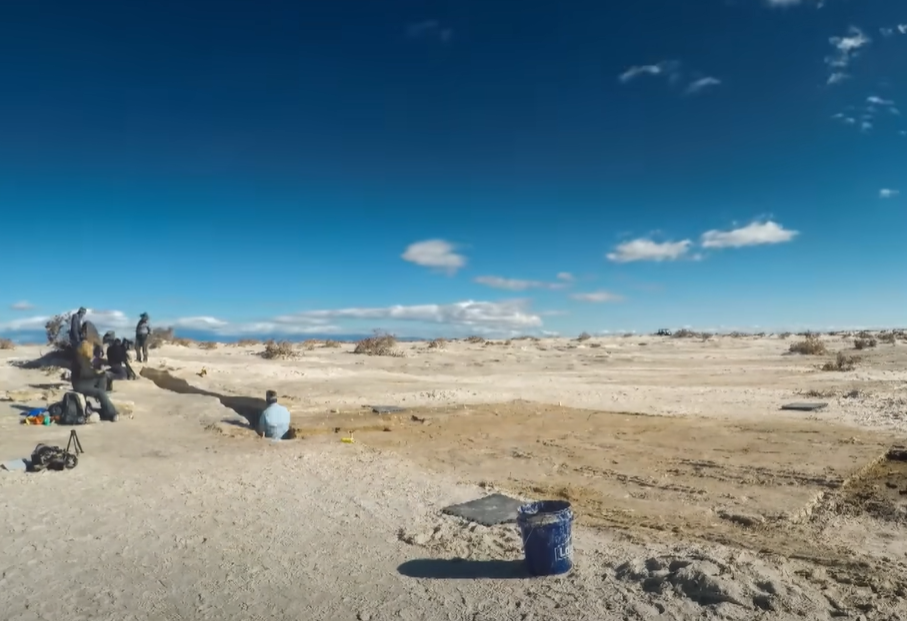 PBS America, Ice Age Footprints (2022)
PBS America, Ice Age Footprints (2022)
Dangerous Living Conditions
The fossilized trackways created by humans and megafauna tell important stories about how the two groups interacted. For example, the pacing of one trackway made by a woman or adolescent male and a toddler shows that the pair was rushing. Scientists speculate that the two were aware of the dangerous megafauna, which was often nearby.
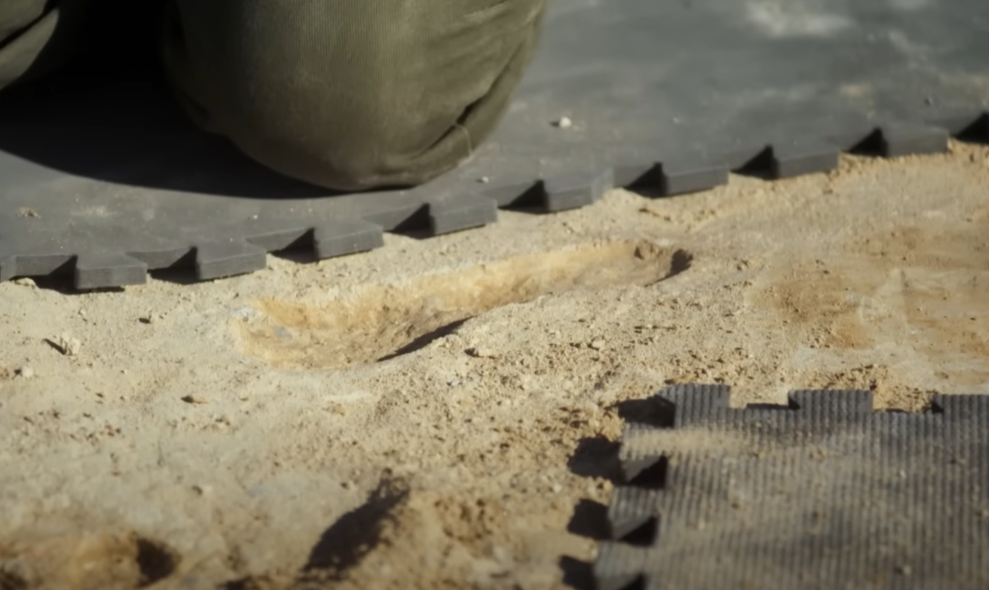 PBS America, Ice Age Footprints (2022)
PBS America, Ice Age Footprints (2022)
Interactions Between Humans And Megafauna
While rushing on their way, the woman or adolescent male and toddler crossed paths with two megafauna: a mammoth and a giant ground sloth. The mammoth's footprints show no change, indicating it wasn't worried about the nearby humans.
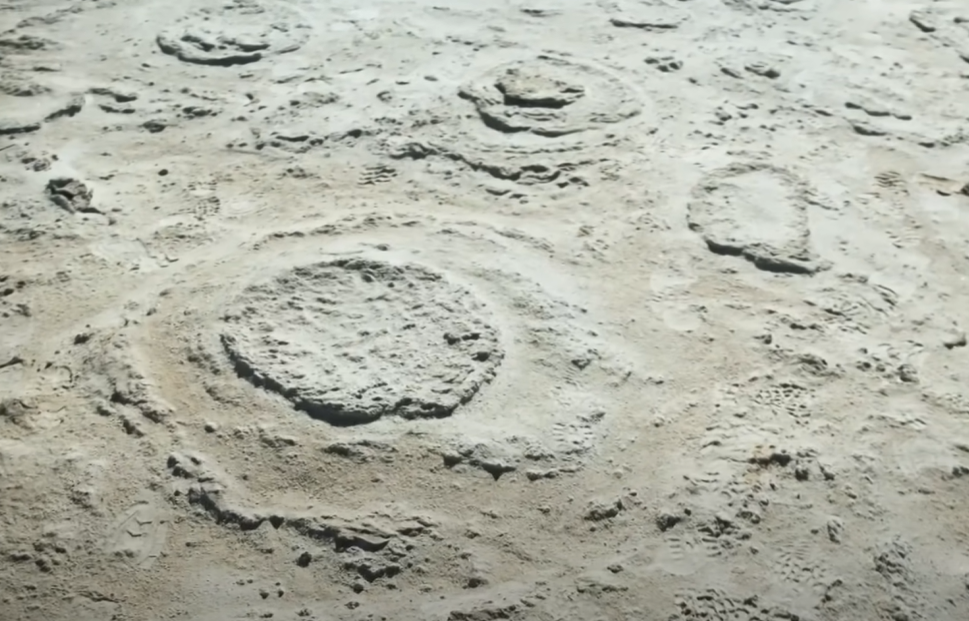 PBS America, Ice Age Footprints (2022)
PBS America, Ice Age Footprints (2022)
Some Megafauna Lived In Fear Too
The sloth's footprints, however, show that the mammal stood on its hind legs and spun away from the humans. It was likely wary of potential danger from them.
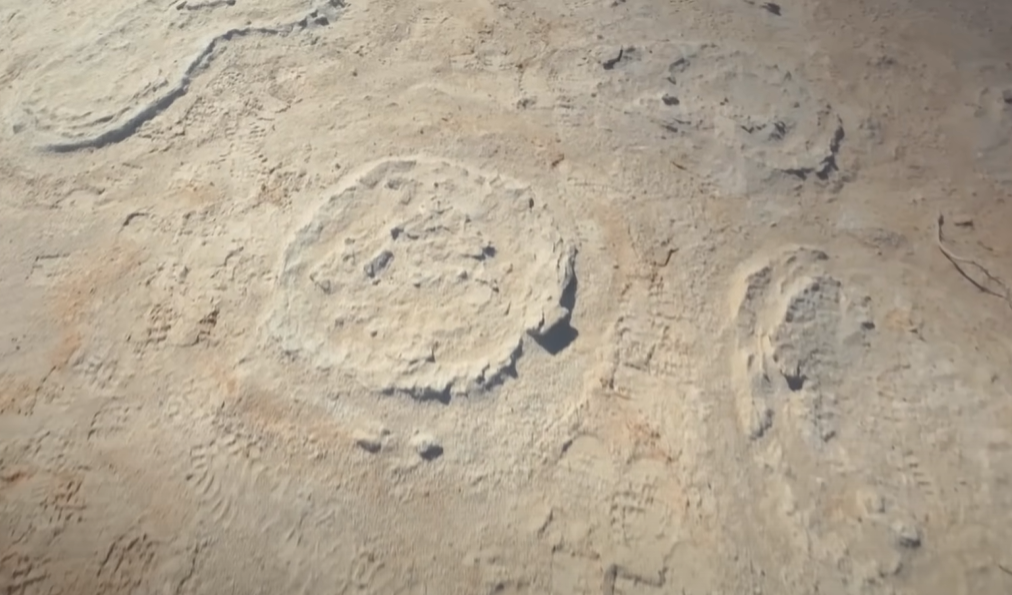 PBS America, Ice Age Footprints (2022)
PBS America, Ice Age Footprints (2022)
Hunting At White Sands
The paucity of archeological remains at the White Sands site makes it difficult for scientists to determine if humans hunted megafauna. However, the fossilized footprints show that the people followed, stalked, and harassed the wildlife. It seems plausible that they performed those actions as part of a hunt.
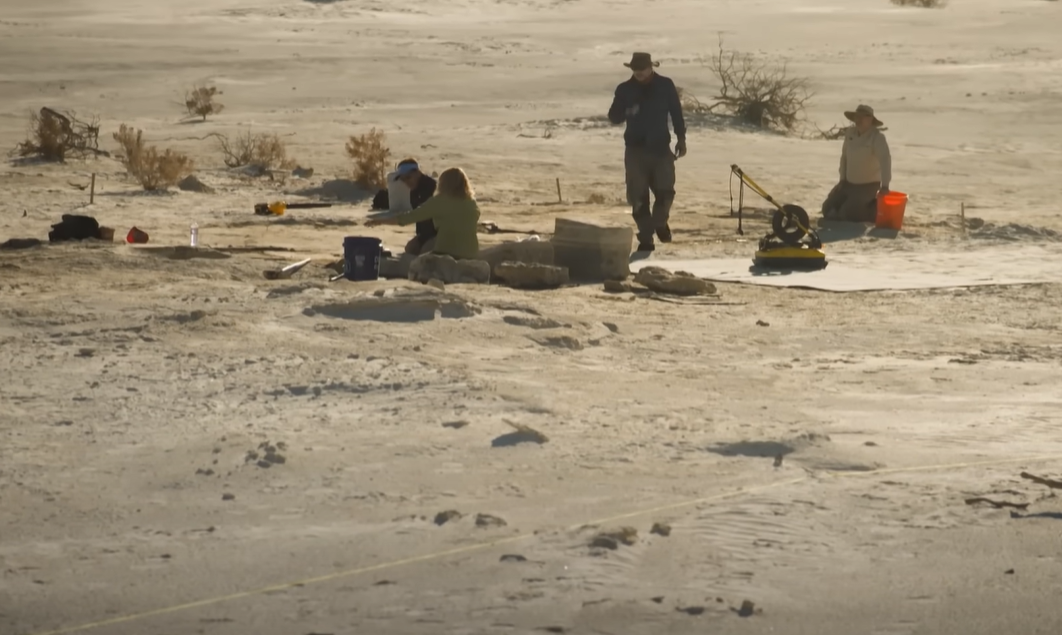 PBS America, Ice Age Footprints (2022)
PBS America, Ice Age Footprints (2022)
Evidence Of A Hunt?
One trackway shows human footprints very closely following those of a giant ground sloth—so closely that human tracks sometimes appear directly inside the tracks of the mammal. The footprints seem to show the humans quickly following the sloth until the sloth rose on its hind legs and flailed in defense. What happened after that point, however, is unknown.
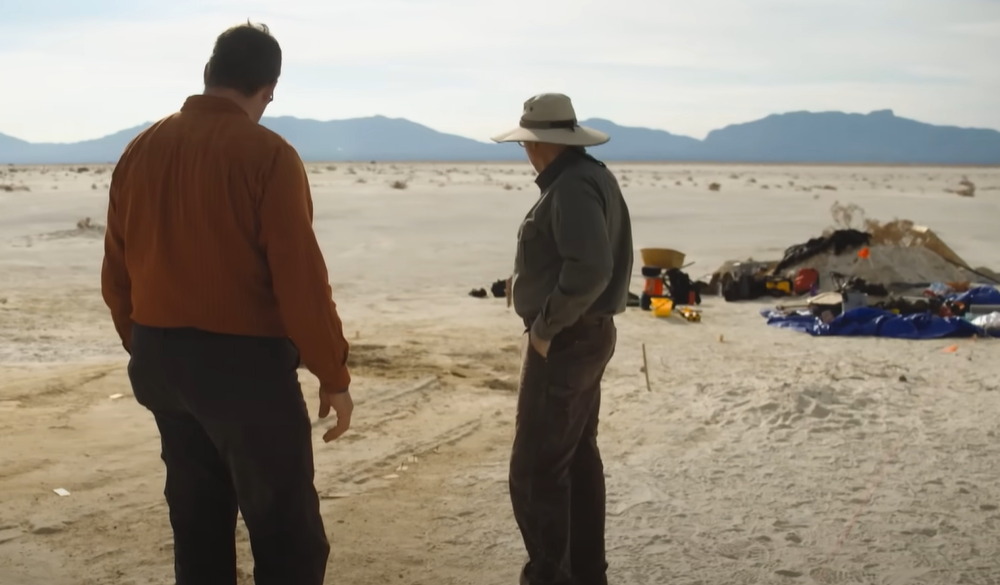 PBS America, Ice Age Footprints (2022)
PBS America, Ice Age Footprints (2022)
Hunting Is An Indigenous Tradition
The hunt is an important part of Indigenous culture. The concept of hunting prey fits with the oral histories of the Indigenous people who now inhabit the region.
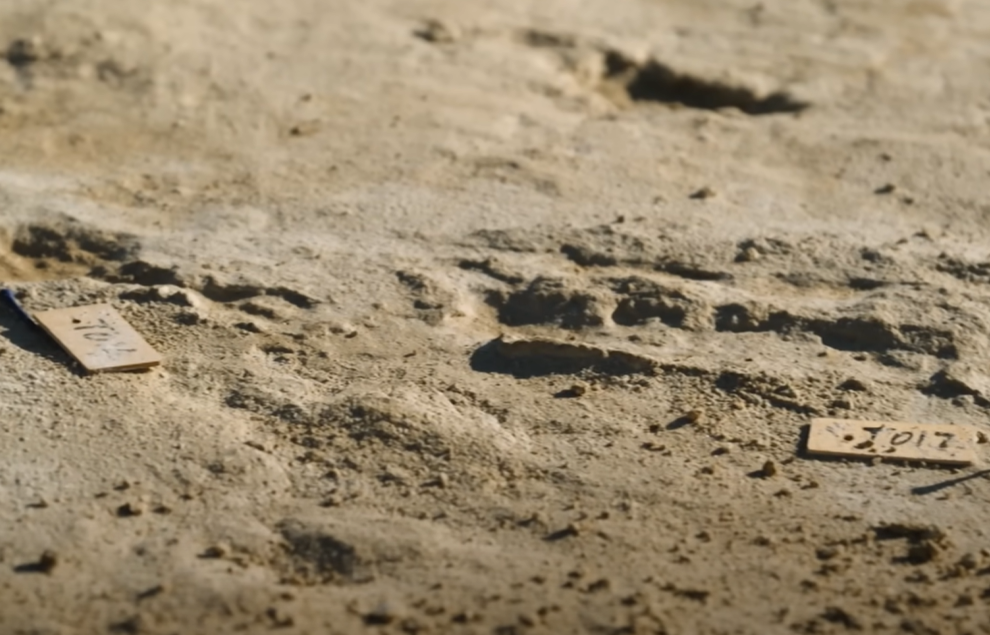 PBS America, Ice Age Footprints (2022)
PBS America, Ice Age Footprints (2022)
Did Humans Contribute To The Extinction Of Megafauna?
One of the important questions coming out of the White Sands site is whether the area's inhabitants contributed to the extinction of nearby megafauna species. Although most scientists agree that climate change was a major factor in the extinction of the mammals, the impact of hunting on animal populations remains unknown.
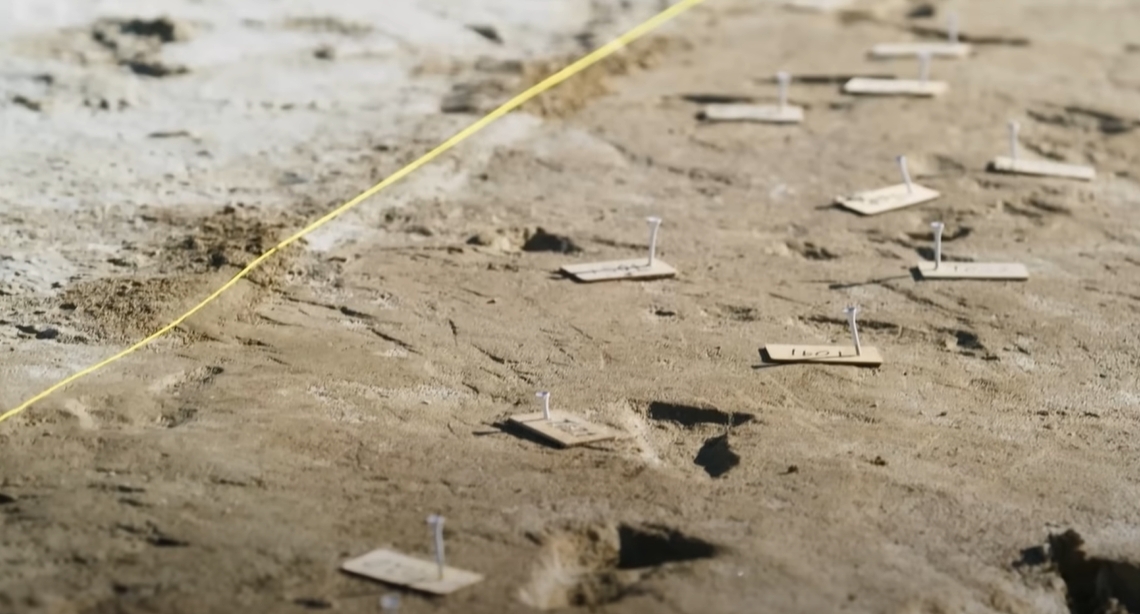 PBS America, Ice Age Footprints (2022)
PBS America, Ice Age Footprints (2022)
An Important Resource
While the footprints themselves offer important information about the lives of humans and megafauna in the Ice Age, the preserved trackways, rich in length and breadth, are likely the most important resource available as we seek to understand the relationship between humans and animals in North America during the Ice Age.
Insights Into Human Behavior
The fossilized footprints tell us important stories about the humans who settled in the White Sands area. One interesting story is that children and teenagers appear to have been more active than adults, since they left behind a high number of footprints.
Children's Play At The White Sands Site
Just like human children today, the children at White Sands engaged in play. The fossilized footprints show that youngsters ran, jumped, skipped, and sloshed in the mud.
Children's Work At The White Sands Site
But the footprints also tell us that childhood was not all play in the White Sands settlement. Scientists hypothesize that children and teenagers were given fetching and carrying tasks. This required them to move around more than adults, who were likely engaged in skilled tasks that required less movement.
Importance To Indigenous Histories
The White Sands site holds particular importance for Indigenous groups who reside in the area today—including the Apache, Tampachoa (Mansos), and Piro people. There is hope that the stories that emerge from the site will lend credence to Indigenous oral histories.
 US Geological Service, Wikimedia Commons
US Geological Service, Wikimedia Commons
The Winds Of Time
Although the fossilized footprints at the White Sands site number in the hundreds of thousands, scientists are concerned about their disappearance. As the wind moves the sand, revealing previously hidden footprints, it also erodes them. Their value to our understanding of the settlement of North America is immeasurable and we need to tap into that knowledge before they are scoured away.
You May Also Like:
The Discovery Of Kennewick Man
What Happened To The Roanoke Settlement?
Neanderthal Markings Found In Sealed Cave Changed Our Understanding Of Our Ancient Cousins


